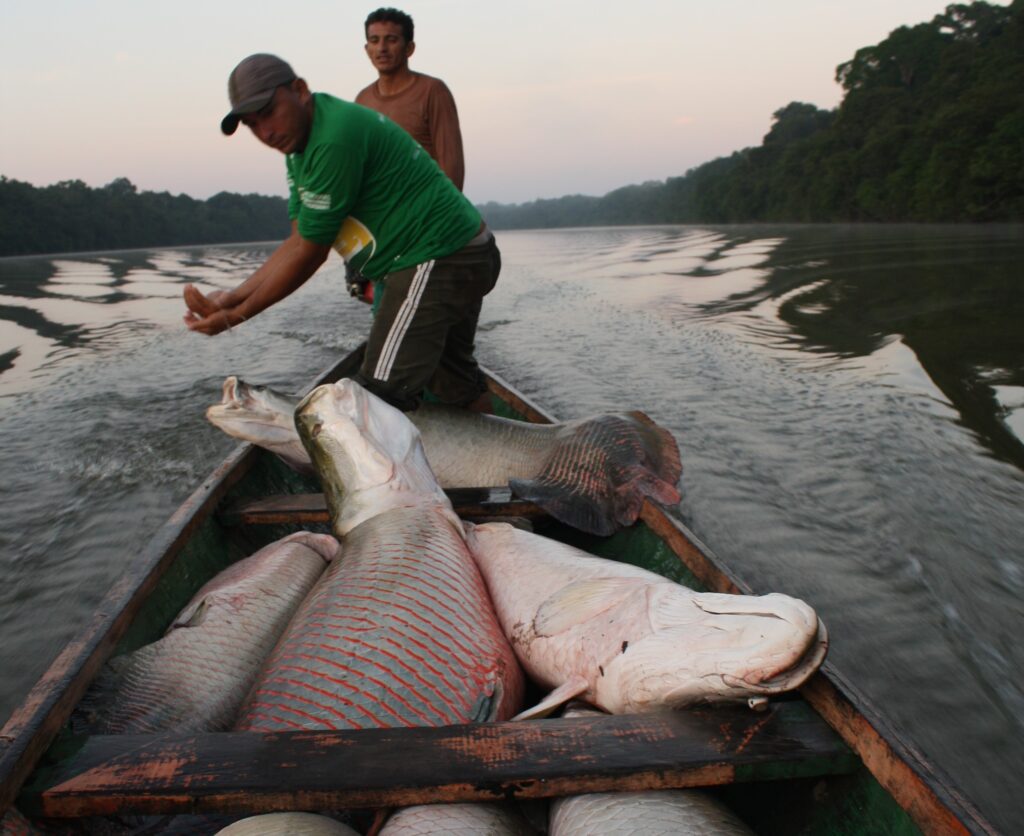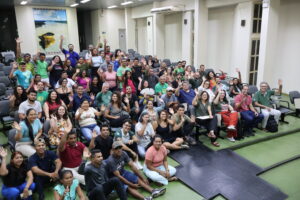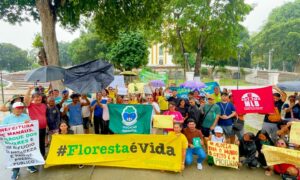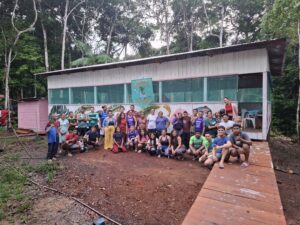Researchers estimate that the area effectively protected by community members is, on average, 36 times larger than the area of direct protection.
By Camila Duarte Ritter and Hugo C. M. Costa
Translated by Bruna Favaro
Researchers from Federal University of Alagoas (UFAL) and Indiana University (USA), in partnership with Instituto Juruá, Memorial Chico Mendes and Association of Residents of Baixo Médio Juruá (AMAB), carry out a study on the importance of community fisheries management for an effective protection and a great added value for the Amazon. The study, entitled Community-based fisheries management exerts a vast value-added effective protection footprint in Amazonian forests, was led by doctoral student Ana Carla Rodrigues, and was submitted to the British scientific journal Nature Sustainability (available as a preprint here). The research reveals crucial findings for the preservation of Amazon ecosystems.
Community fishing management in the region has stood out for integrating territorial protection, local well-being and biodiversity conservation. The results of this research demonstrate that local communities not only effectively protect lakes, but also go further, preserving a significantly larger area than previously imagined. Together with the communities, the researchers mapped the routes and strategic surveillance points, defining four scales of territorial protection led by the communities.
The direct protection scale is the area of the lake where the community, once a year, harvests arapaima. To ensure the protection of a lake, a surveillance route eight times longer is traversed. This scale is called the effective protection scale. During the flood season, the forest becomes flooded, remaining available to all aquatic fauna and extending the effects of protection to a functional area, which is measured based on arapaima movement data under the umbrella species concept. This functional area is, on average, 36 times larger than the direct protection area. Furthermore, a large area of upland forest is protected simply by closing access points through the floodplain, which is seasonally flooded.


The cost of protection, surprisingly low (US$0.95 per hectare per year), is fully covered by rural communities. This discovery highlights not only the remarkable effort of these communities, but also the urgent need for financial compensation mechanisms to remunerate their vital role in preserving the Amazon. This decentralized and participatory approach reveals the resilience and effectiveness of the community fisheries management model in the region.
The researchers conclude that arapaima management not only promotes food security and annual financial gains for communities, but also has a cascading impact on conservation at different scales. The urgent need is to recognize and reward these efforts, consolidating a path to a brighter future in the Amazon, where local livelihoods and the protection of the world’s largest rainforest are intrinsically intertwined. This study not only contributes to science, but serves as a call to action for the sustainable preservation of the Amazon and its guardian communities.
Reference: Rodrigues, A. C., Costa, H.C.M., Peres, C., Brondízio, E., Dias, A., Dias, J., Constantino, P., Ladle, R., Malhado, A., & Campos-Silva, J. (2024). Community-based fisheries management exerts a vast value-added effective protection footprint in Amazonian forests.






